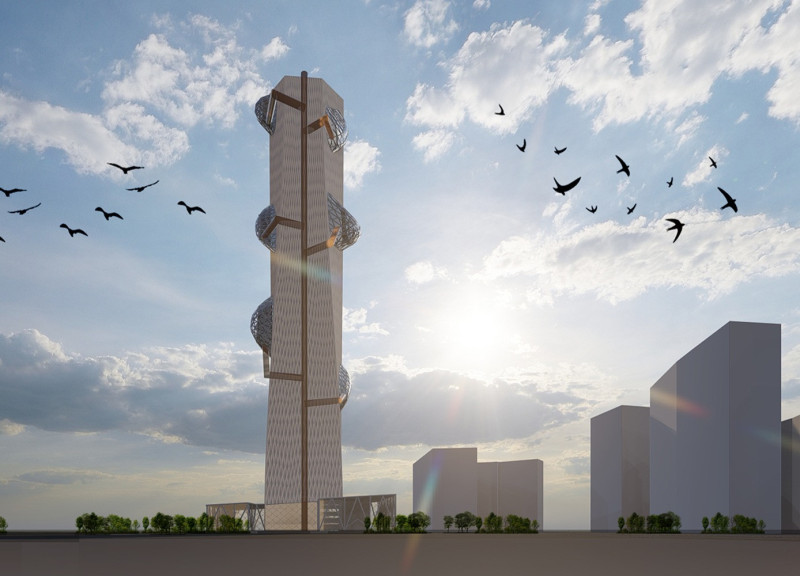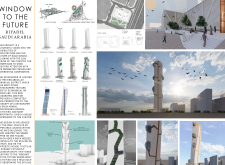5 key facts about this project
The project "Window to the Future" presents a modern vision for high-rise design in Riyadh, Saudi Arabia. Situated in the King Abdullah Financial District (KAFD), the structure combines innovative architectural principles with a focus on community engagement. The concept centers on parametric design, creating a fluid and adaptable form that integrates with the urban setting while serving multiple functions.
Parametric Design and Form
Parametric design is at the heart of this structure, resulting in a unique and dynamic building envelope. The use of modular and flowing shapes enhances both aesthetic appeal and practical functionality. The structure features a tapered top that contributes to an impression of height. This distinct shape is complemented by a tilted roofline, creating a notable presence in the skyline of Riyadh.
Integration of the Wadi
A vital aspect of the design is the incorporation of the Wadi, an open space within the KAFD. This area acts as a green spine along one facade, introducing plants and nature into the dense urban environment. On the opposite side, the design includes a futuristic elevator shaft. This serves as a vertical transportation feature, providing efficient access to different levels while offering observation points for visitors.
Public Spaces and Pedestrian Connectivity
Significant public spaces are included in the layout, such as a sky lounge and exhibition areas. These spaces serve as gathering points, promoting interaction among visitors and residents. The design focuses on pedestrian connectivity, with pathways that link the building to its surroundings. This feature allows for easy movement, enhancing the overall experience of the area while creating a lively urban atmosphere.
Visual Experience and Design Details
"Window to the Future" incorporates thoughtful design elements aimed at enhancing visitor engagement. The placement of viewing platforms is deliberate, allowing guests to enjoy sweeping views of the Riyadh skyline. This focus on visual opportunities encourages exploration and interaction with both the building and the city. It highlights a commitment to creating a community space that reflects the aspirations of a modern, connected urban environment.




















































